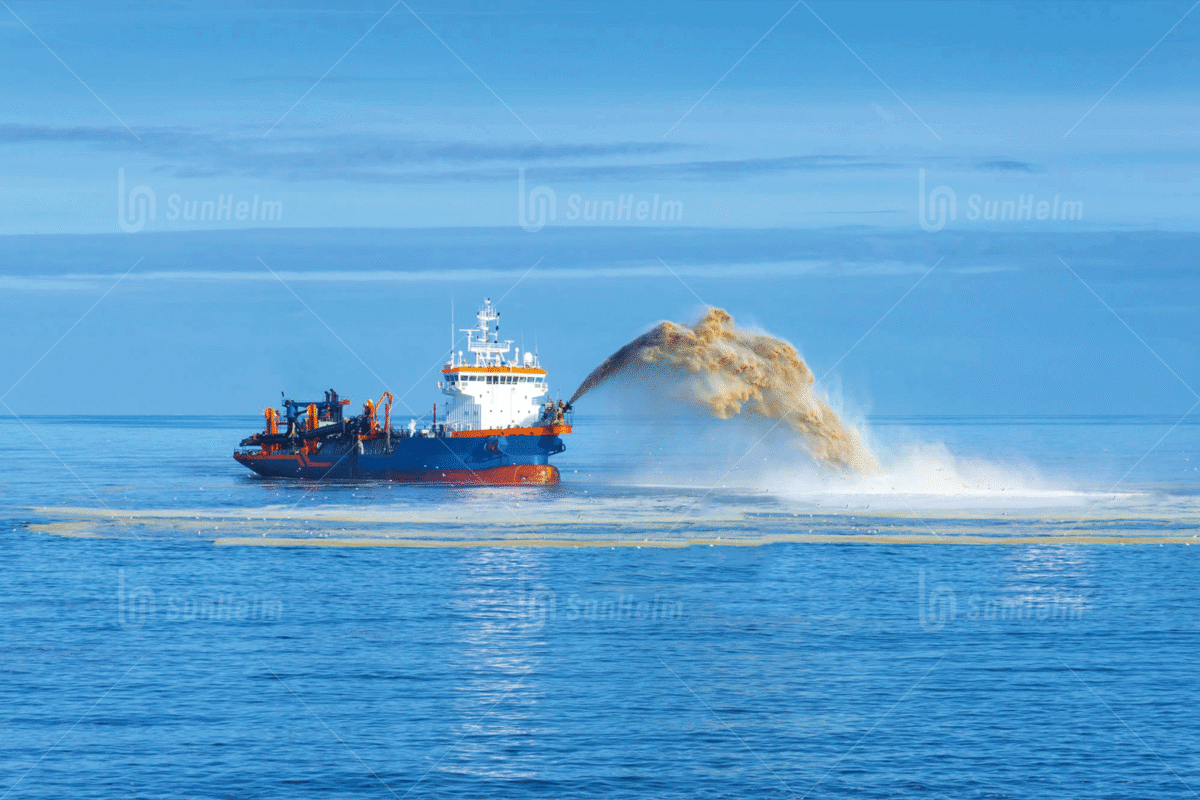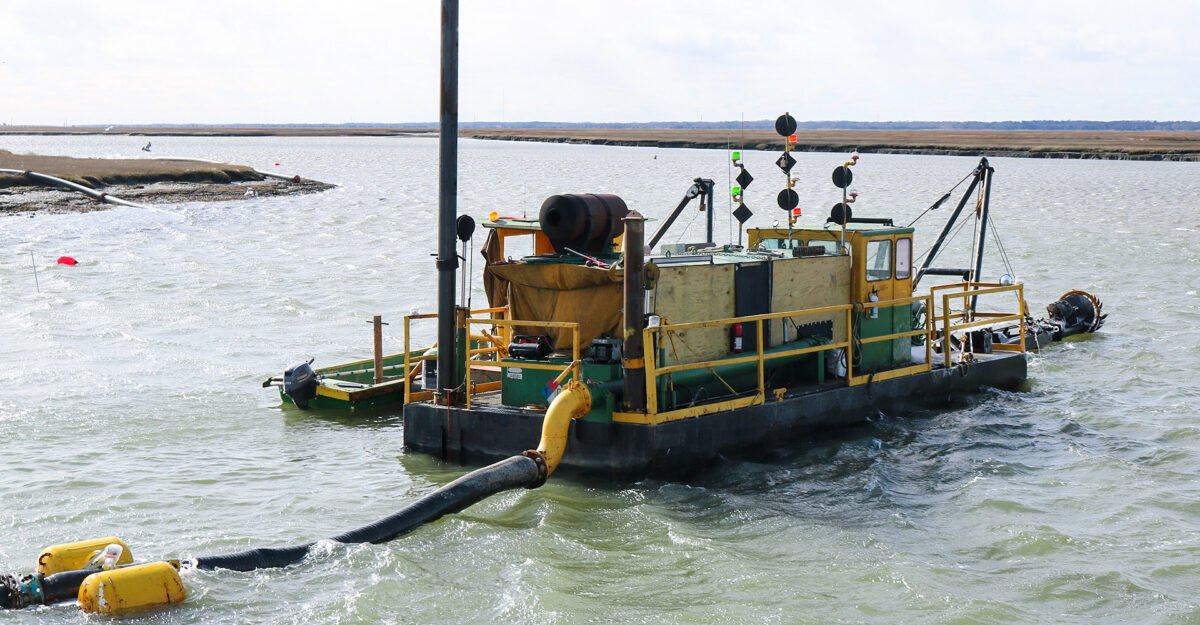What is a dredge hose?
2025年10月10日What Is a Slurry Hose?
2025年10月16日When it comes to maintaining waterways, building new land, or extracting resources from rivers and seas, dredging plays a vital role. Dredging means removing sediment, sand, mud, or other materials from the bottom of water bodies to deepen or clean them. It helps ports stay open, supports construction projects, and protects the environment.
At the heart of every dredging system is the dredge pipe — the main channel that carries the dredged material from one place to another.
What Is a Dredge Pipe?
A dredge pipe is a specially designed pipeline used to transport dredged materials — mixtures of water, sand, silt, clay, or gravel — known as slurry. Unlike ordinary pipelines, dredge pipes are built to handle heavy abrasion, high pressure, and sometimes corrosive environments.
A typical dredge pipeline includes:
- Main pipe section: for slurry transport.
- Flanges or couplings: for quick connection and alignment.
- Elbows and joints: to guide flow and handle directional changes.
- Floaters or supports: when pipes operate on the water’s surface.
Its robust design ensures efficient and continuous material transport during dredging operations, even in harsh marine or mining environments.

Types of Dredge Pipes
Different dredging projects require different types of pipes. The most common categories include:
1. Steel Dredge Pipes
- Made of carbon or alloy steel.
- Excellent strength and wear resistance.
- Often used in long-distance and high-pressure transport.
- Can include internal liners (rubber, ceramic, or polyurethane) to extend lifespan.
2. HDPE (High-Density Polyethylene) Dredge Pipes
- Lightweight, flexible, and corrosion-resistant.
- Easy to install and float on water with external floats.
- Best for medium-pressure or temporary dredging projects.
3. Rubber or Ceramic-Lined Pipes
- Combine flexibility and wear resistance.
- Common in abrasive slurry transport such as sand mining or tailings return.
- The ceramic lining offers superior durability for long-term use.
4. Floating Dredge Pipelines
- Consist of HDPE or steel pipes with foam-filled floaters.
- Ideal for marine dredging, offshore sand mining, and reclamation.
- Easy to deploy and maintain in dynamic water environments.
Each type of dredge pipe offers different advantages depending on the working pressure, material abrasiveness, and environmental conditions.
How a Dredge Pipe Works
Dredge pipes operate as the main transport channel between the dredge pump and the discharge site.
The dredge pump generates pressure, pushing the slurry through the pipeline.
Flow velocity, particle size, and solid concentration directly affect wear and pressure loss inside the pipe.
A well-designed dredge pipe system balances flow efficiency with durability to reduce energy use and maintenance costs.

Main Applications of Dredge Pipes
1. Port and Channel Dredging
Ports and rivers constantly accumulate sediment that blocks navigation routes.
Dredge pipes transport the removed material from the seabed to disposal areas or reclamation sites.
They are often used with trailing suction hopper dredgers or cutter suction dredgers.
2. Sand Mining and Extraction
In river or seabed mining, dredge pipes carry sand and gravel to barges or shore-based processing sites.
Due to high solid content, steel or ceramic-lined pipes are commonly used to resist heavy abrasion.
3. Land Reclamation and Coastal Construction
For creating new land, building breakwaters, or beach nourishment, dredge pipes transfer dredged materials to fill target areas.
Floating HDPE pipes are popular here because they are flexible and easy to install in shallow waters.
4. Offshore and Deep-Sea Mining
In offshore mining projects, dredge pipes handle high pressure and long transport distances.
They require reinforced materials, strong joints, and stable floating systems to ensure reliability.
5. Tailings and Slurry Transport in Mining
In mining operations, dredge pipes are also used to return or dispose of tailings — the waste slurry after mineral separation.
They must resist corrosion from chemicals and abrasion from hard particles.
6. Environmental Dredging and Restoration
For cleaning polluted sediments or restoring lakes, smaller and flexible dredge pipes are used.
They allow precise control in shallow or narrow working areas, minimizing disturbance to surrounding habitats.
7. Emergency and Maintenance Dredging
After storms or floods, dredge pipes are quickly deployed to remove silt and debris from harbors and drainage channels.
Portable HDPE pipelines provide rapid response and easy relocation.
Key Factors When Choosing a Dredge Pipe
Choosing the right dredge pipe can determine the success and efficiency of the whole operation.
Here are the main points to consider:
- Material and Liner Type – Select according to the slurry’s abrasiveness and chemical content.
- Pipe Diameter and Flow Rate – Must match pump capacity to avoid excessive wear or clogging.
- Operating Pressure and Length – Longer distances or deeper projects require stronger pipes.
- Connection Type – Flanges, quick couplings, or welded joints depending on mobility needs.
- Support or Floating System – For offshore work, stable floaters prevent bending or breakage.
- Maintenance Cycle – Consider ease of replacement, lining inspection, and cleaning options.
- Total Cost of Ownership – Balance between initial cost, wear life, and operating energy.
Installation and Maintenance Tips
- Before installation, check for cracks, deformation, and flange alignment.
- Ensure proper support or floating spacing to prevent sagging.
- Monitor flow and pressure during operation to detect blockages or leaks early.
- Clean the pipeline regularly using flushing water or pigging devices.
- Replace liners or worn sections promptly to avoid costly downtime.
Common Questions About Dredge Pipes (FAQ)
Q1: Why do dredge pipes wear out so fast?
Because slurry contains hard particles that erode the pipe’s inner wall. Using liners or reducing flow velocity helps extend service life.
Q2: How can I prevent clogging?
Maintain a minimum flow velocity and use proper pipe diameter. Periodic flushing also prevents sediment buildup.
Q3: Are HDPE dredge pipes suitable for sea water?
Yes, HDPE is corrosion-resistant and widely used in marine environments.
Q4: What is the best pipe for sand dredging?
Steel pipes with rubber or ceramic linings offer the best wear resistance for high-sand-content slurry.
Environmental and Safety Considerations
A leaking dredge pipe can cause serious environmental damage.
To ensure safety and compliance:
- Inspect joints regularly to avoid leaks.
- Install containment barriers for sensitive areas.
- Train operators in emergency response procedures.
- Follow local regulations for dredging waste disposal and water protection.
Conclusion
The dredge pipe is more than just a simple tube — it is the lifeline of every dredging operation.
From maintaining port depths to creating new land and transporting tailings, it plays a vital role in moving materials efficiently and safely.
Choosing the right dredge pipe means balancing durability, cost, and operational needs — a key step toward a successful dredging project.
